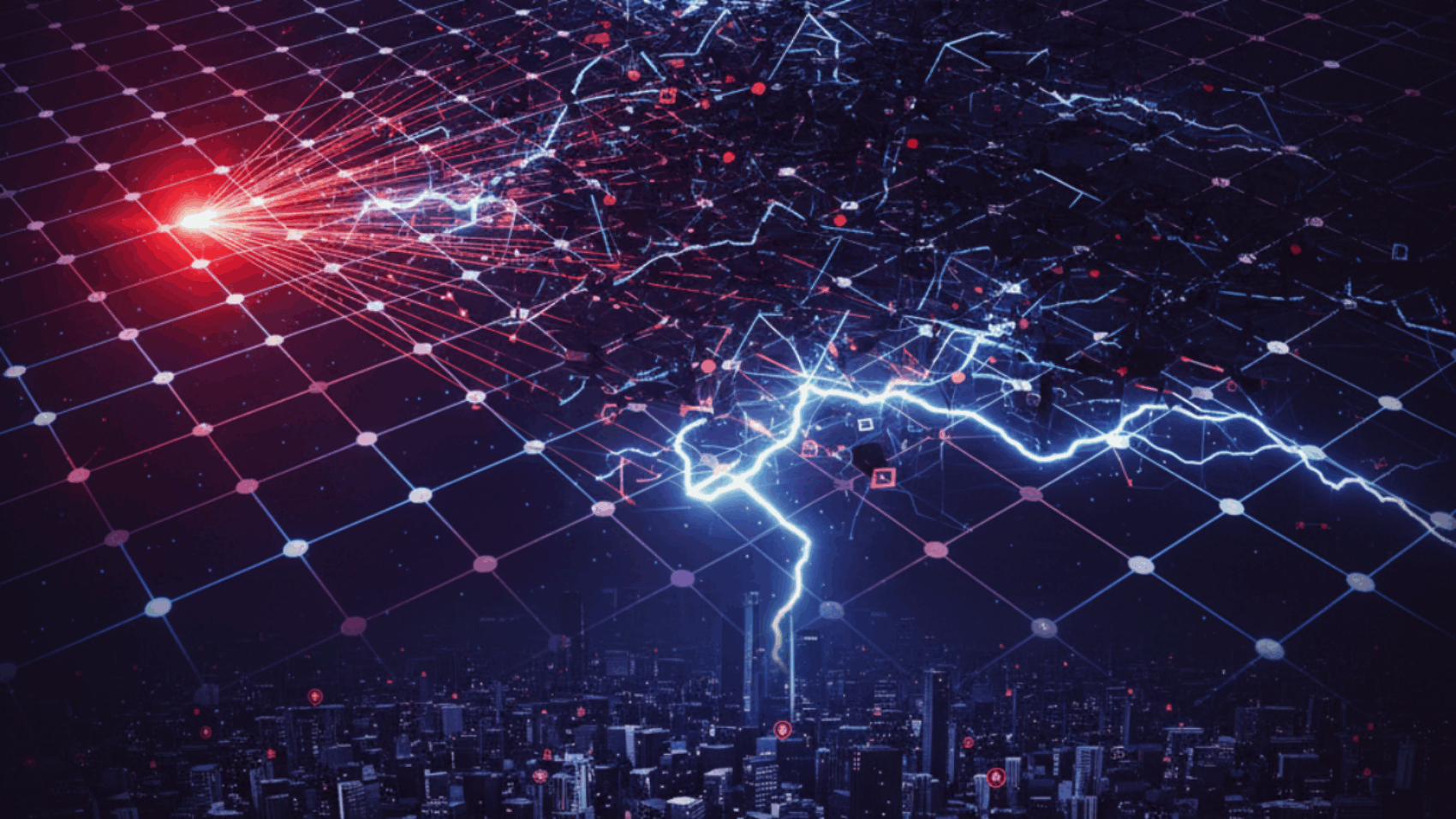Introduction
Electricity powers everything — from the servers hosting your favorite apps to the hospital machines saving lives. But what happens when a single point in this vast, complex network fails? The answer: a domino effect.
In today’s hyperconnected energy infrastructure, even a minor fault in one part of the grid can cascade into large-scale blackouts, crippling industries and disrupting digital uptime.
At Uptime Warriors, we dive deep into the unseen fragility of power networks — exploring how one small failure can ripple across cities, countries, and even continents.
What Happens When Power Fails
Power grids are designed to be robust — but not infallible. Each node (a power plant, transformer, or substation) depends on others for stability. When one fails, it can trigger automatic shutdowns or overloads in connected systems, spreading the outage rapidly.
Real-world examples:
- In India’s 2012 blackout, a transmission overload in the northern grid cascaded into the eastern and northeastern networks — leaving 620 million people without electricity, the largest blackout in history.
- In Texas (2021), freezing temperatures caused a surge in demand and power generation failures, leading to grid collapse and billions in losses.
- In Pakistan (2023), a frequency fluctuation caused a chain reaction that shut down the national grid — a textbook example of cascading system failure.
Each of these incidents started with a localized issue — and ended in nationwide chaos.
The Anatomy of a Cascade
Understanding how one failure spreads helps us design better resilience:
- Initial Fault:
A line trips, a transformer fails, or a generation plant shuts down unexpectedly. - Load Redistribution:
The power demand shifts instantly to other parts of the grid, increasing stress on neighboring systems. - Overload and Protection Triggers:
To prevent equipment damage, protective relays disconnect additional lines — ironically worsening the situation. - Grid Segmentation:
Major sections of the network “island” themselves to prevent a total collapse — but this causes rolling blackouts. - Systemic Failure:
Industrial operations, transportation, and data centers lose power, creating economic and operational paralysis.
Digital Downtime Meets Energy Instability
It’s not just homes and factories — the digital economy runs on uninterrupted electricity.
- Data centers depend on grid stability; even with UPS and diesel backups, long outages can trigger overheating and resource limits.
- Telecommunication towers rely on power continuity; once backup batteries deplete, networks go dark.
- Cloud services face cascading downtime as interconnected facilities lose connectivity.
In short, a local grid issue can ripple into global data unavailability.
Preventing the Domino Effect: Modern Grid Resilience Strategies
- Real-Time Monitoring with IoT
Smart sensors across substations now detect micro-faults before they escalate — allowing predictive intervention. - Grid Decentralization (Microgrids)
Regional microgrids can operate autonomously during failures, preventing national-scale blackouts. - AI-Driven Fault Prediction
Machine learning models forecast weak links in load distribution and maintenance cycles — stopping failures before they begin. - Energy Storage Integration
Battery energy storage systems (BESS) stabilize frequency imbalances and provide emergency backup within milliseconds. - Infrastructure Redundancy
Designing for failure is no longer optional — dual transformers, looped circuits, and redundant paths are vital. - Cross-Border Cooperation
Power-sharing agreements between regions and nations help balance grid stress during high-demand periods.
Lessons from the Field
Each major outage brings new insights. Engineers now recognize that prevention isn’t just hardware-based — it’s about data, prediction, and collaboration.
Energy resilience is no longer limited to utility companies; uptime professionals, cloud architects, and data engineers all play a role in ensuring the lights — and the servers — stay on.
Conclusion
The next major outage might not come from a storm or cyberattack — it could start with a single unnoticed failure deep within the grid.
At Uptime Warriors, we believe in turning those moments of failure into frameworks for resilience. Because in today’s connected world, uptime doesn’t start with your server — it starts with your power supply.

